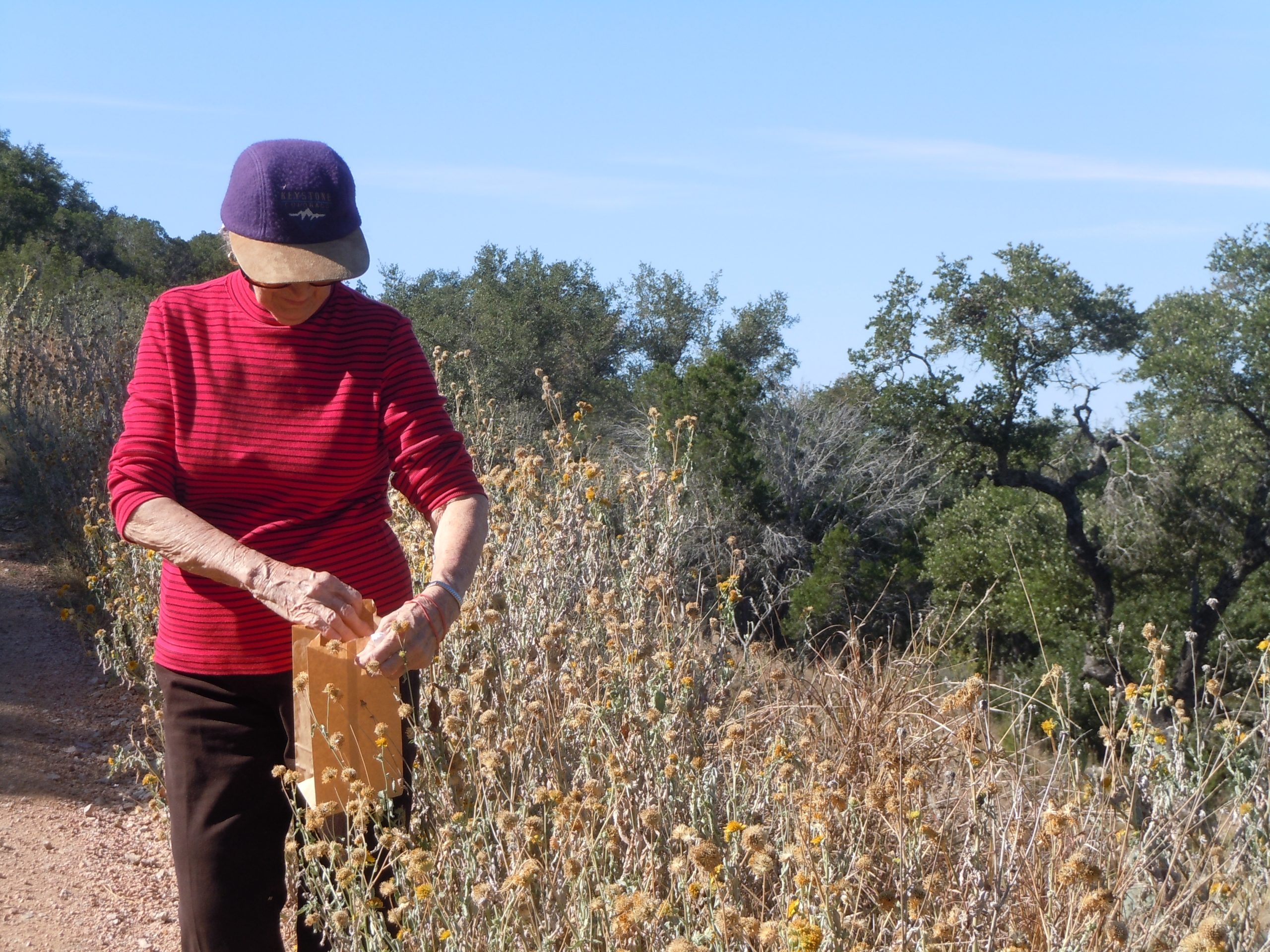As 2010 winds to a close, it’s not too late in Central and South Texas to collect native seeds from your favorite butterfly plants nor too early to plan and sow them for next year’s butterfly garden.
Many of butterflies’ favorite nectar sources are native plants and wildflowers.
You can buy native seeds from your local garden center or order from a reputable native seed supplier like American Native Seed in Junction. Another option is to collect seeds from plants in your own garden or neighborhood, from roadsides or other public places.
Given the high cost of seeds—often several dollars for a packet–collecting your own or sharing/trading with fellow gardeners makes huge sense. Gardening clubs and native plant societies often host seed swaps for members. A bonus is that seed collecting is an excellent activity for kids of all ages.
Imagine the satisfaction when a butterfly lights on a bloom resulting from a seed you foraged yourself in nature. And if you have access to butterfly host plant seed, like milkweed or passionflower vine, you can enjoy the cycle from start to finish, as butterflies will lay eggs on these plants. Few exercises are more powerful in cultivating our landscapes and an appreciation for nature.
Late fall and early winter is prime time for seed collection. As temperatures drop, seedpods and old buds bust open and plants disperse seed for the spring generation. Seeds are EVERYWHERE right now. Just look around. What looks like dead growth often hosts next year’s blooms, so don’t just cut unsightly plants to the ground or dig up—notice, collect and sow those seeds.

Cowpen Daisy seed
When collecting, just make sure you’re not on private property, says David Braun, an attorney based in Austin, Texas who works with rural property owners on conservation issues.
“It’s not cool to take seed from someone’s private land without their permission,” he said.
One of my favorite native butterfly nectar plants is Cowpen Daisy. The seeds of this under appreciated wildflower is easy to collect and simple to grow. Drought tolerant, a surefire germinator, and a robust bloomer, Cowpen Daisy puts out
Border Patch butterfly on Cowpen Daisy
early and often, attracting butterflies, April – October. Cut it back to keep it tidy or, let it grow wild and woolly, creating a massive butterfly hedge. Cowpen Daisy is also the host plant to the Bordered Patch butterfly.

Finally, if you’ve planted fennel or parsley this fall to attract Swallowtails, don’t just toss or dig it up when it “goes to seed.” Grab the makings for future fabulous plants, and sow them for the next harvest. The butterflies will thank you.



[…] night giving a haircut to the hundreds of Cowpen Daisy seedlings we planted several weeks ago. Ways to collect the seed–and our weakness for their easy germination–were covered in a recent blogpost. BEFORE: […]
[…] night giving a haircut to the hundreds of Cowpen Daisy seedlings we planted several weeks ago. Ways to collect the seed–and our weakness for their easy germination–were covered in a recent blogpost. Crowded […]
[…] year we wrote about collecting seeds from the prolific Cowpen Daisy, one of my favorite wildflowers. Those seeds, Verbesina encelioidesm, are more scarce this year […]